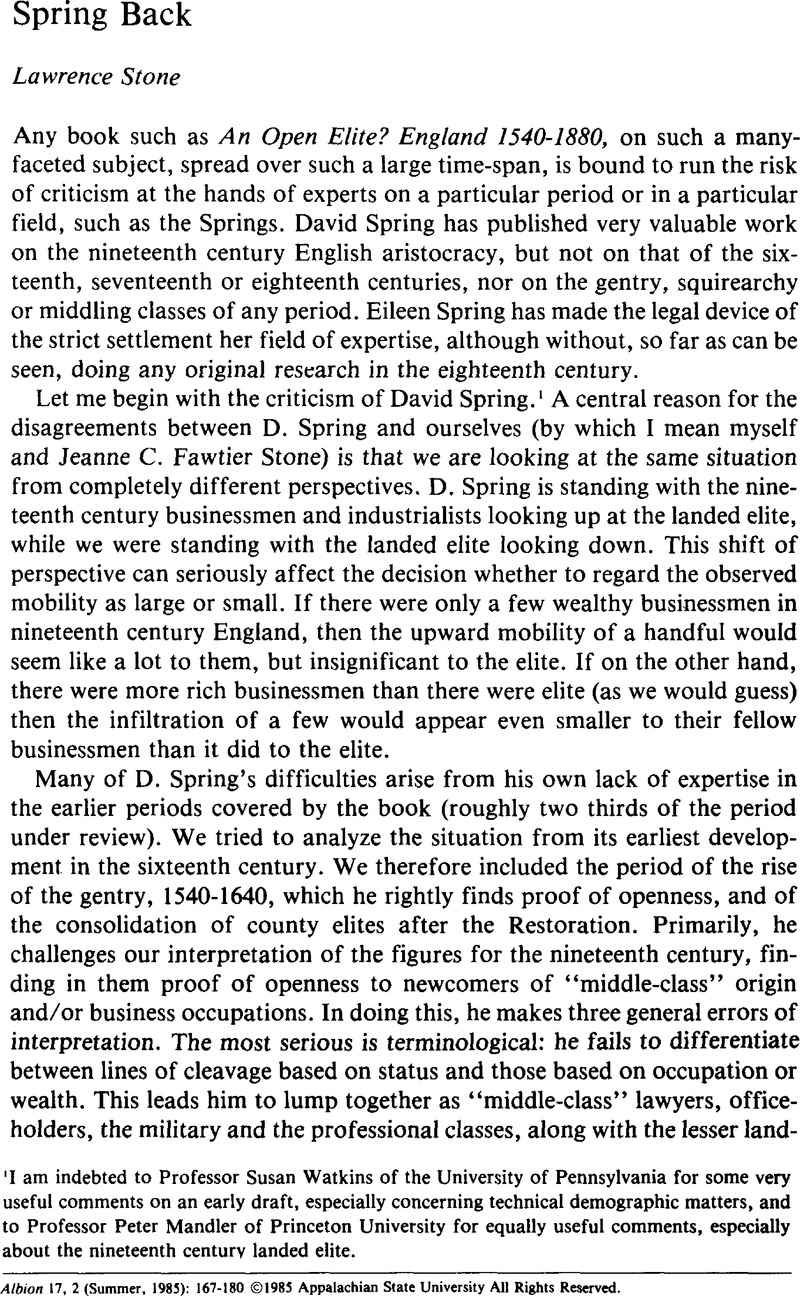Article contents
Abstract

- Type
- Review Essays
- Information
- Copyright
- Copyright © North American Conference on British Studies 1985
References
1 I am indebted to Professor Susan Watkins of the University of Pennsylvania for some very useful comments on an early draft, especially concerning technical demographic matters, and to Professor Peter Mandler of Princeton University for equally useful comments, especially about the nineteenth century landed elite.
2 Professor Paul Lucas's unpublished researches indicate that most barristers in the eighteenth century were of genteel origin. For the nineteenth century, the evidence is provided by Duman, D., The English and Colonial Bars in the Nineteenth Century (London, 1983)Google Scholar, Table 6.1 Even as late as 1885, only a quarter of the bar came from business backgrounds and most of them had had their social origins laundered through the experience of education at a major public school (ibid., p. 107, table 3.4).
3 Howe, A., The Cotton Masters 1830-60 (Oxford, 1984), pp. 252–54, 264, 266, 268–69.Google Scholar
4 Koditchek, T., “The Bradford Bourgeoisie” (Ph.D. diss., Princeton University, 1981)Google Scholar; J.V. Beckett on B.B.C. 2 Timewatch programme, October, 1984.
5 Spring is correct to point out that office-holders and lawyers resold in Hertfordshire at almost the same rate, something which I had observed, but failed to discuss. He is right to chastise me on this point.
6 Rubinstein, W.D., “New Men of Wealth and the Purchase of Land in the Nineteenth Century,” Past and Present 92 (1981).CrossRefGoogle Scholar
7 Rubinstein, W.D., Men of Property (New Brunswick, N.J., 1981), pp. 217, 219Google Scholar. The comparison between 19 industrial landed millionaries and 18 commercial ones in 1880 tells us nothing, except that industry now equalled banking and commerce as a source of really vast wealth.
8 Aydelotte, W.O., “The Business Interests of the Gentry in the Parliament of 1841-47,” Appendix to G. Kitson Clark, The Making of Victorian England (London, 1962).Google Scholar
9 A classic case is Venice where so many reluctant daughters were forced unwillingly into nunneries that the places became open brothels (Ruggiero, G., The Boundaries of Eros: Sex, Crime and Sexuality in Renaissance Venice [New York, 1985], ch. iv).Google Scholar
10 Bonfield, L., “Marriage, Property and the Affective Family,” Law and History Review I (1983).Google Scholar
11 Trumbach, R., The Rise of the Egalitarian Family (New York, 1978), Appendix BGoogle Scholar. The only published evidence of original research by E. Spring in this area is a list of nineteen settlements, all of the nineteenth century (Spring, E., “The Family, Strict Settlement, and Historians,” Canadian Journal of History [Dec. 1983]: 386, note 23Google Scholar).
12 English Reports, 25, p. 751.Google Scholar
13 English Reports, 28, pp. 742–48.Google Scholar
14 For recent work on the strict settlement, see Bonfield, L., “Marriage, Property and the Affective Family,” and Marriage Settlements, 1601-1740 (Cambridge, 1983)CrossRefGoogle Scholar; R. Trumbach, Rise of the Egalitarian Family; English, B. and Saville, J., Strict Settlement: a Guide for Historians (Hull, 1983).Google Scholar
- 3
- Cited by




